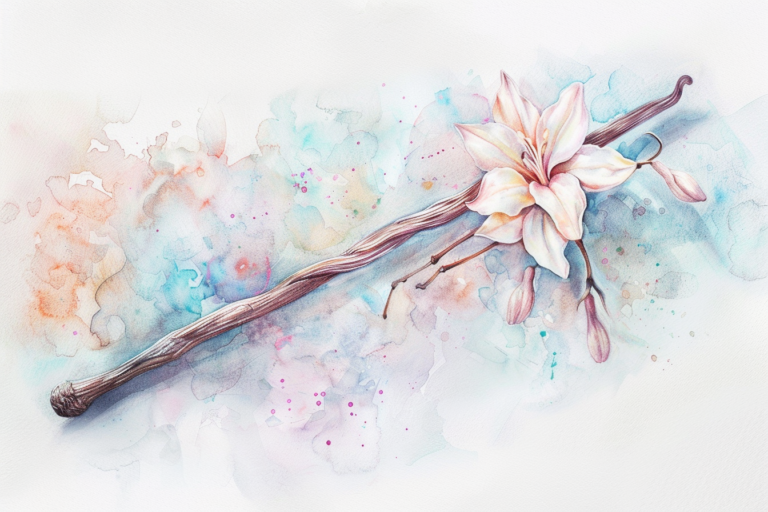
Vanilla (Vanilla planifolia) is one of the most popular and widely used spices globally. Its sweet and rich aroma makes it a favorite in culinary applications, cosmetics, and aromatherapy. Beyond its pleasing scent, vanilla has several interesting biological properties, particularly its impact on the human hormonal system. This article delves into the historical use of vanilla, its chemical composition, and scientific studies that explore its effects on human health, especially mental health.
Vanilla has a long history dating back to ancient times. Originating from Central and South America, it was cultivated by the Aztecs and Maya, who used it in their rituals and to flavor their chocolate drink “xocoatl.” When Spanish explorers brought vanilla to Europe, it quickly gained popularity among the aristocracy. Vanilla was often used in medicines and perfumes, revered for its unique aroma and perceived health benefits.
The primary compound in vanilla is vanillin, responsible for its distinctive aroma. Vanillin is a phenolic aldehyde with various biological properties, including antioxidant, anti-inflammatory, and antimicrobial effects. Besides vanillin, vanilla contains essential oils, resins, tannins, and other compounds that contribute to its health benefits.
One of the fascinating aspects of vanilla’s biological impact is its effect on the hormonal system. Although research in this area is still developing, several studies have shown promising results.
Antioxidant Properties and Stress Reduction: Vanillin, a major component of vanilla, has potent antioxidant properties. Antioxidants help reduce oxidative stress in the body, which is known to affect hormonal balance, particularly cortisol levels. By reducing oxidative stress, vanillin can help normalize cortisol levels and improve overall health.
Estrogenic Effects: Some studies suggest that vanillin may have estrogenic effects, meaning it can mimic the action of estrogens, the female sex hormones. Vanillin binds to estrogen receptors and may positively impact female reproductive health, improve mood, and alleviate menopause symptoms.
Influence on Neurotransmitters: Vanilla may also affect neurotransmitters such as dopamine and serotonin, crucial for regulating mood and emotional state. Research indicates that the aroma of vanilla can increase serotonin levels, enhancing mood and reducing anxiety.
Modern research continues to explore vanilla’s impact on human health. One notable study conducted in 2005 found that the aroma of vanilla significantly reduced anxiety levels in patients undergoing MRI scans. The study involved 85 participants, and those exposed to vanilla aroma reported significantly lower anxiety levels than the control group.
Given its anxiolytic and mood-enhancing properties, vanilla holds promise for various mental health applications:
Vanilla is not just a beloved spice but also a potent tool for improving health. Its antioxidant properties, effects on hormonal balance, and impact on neurotransmitters make vanilla a promising natural remedy for reducing stress, enhancing mood, and supporting mental health. Ongoing research will further elucidate the mechanisms by which vanilla exerts its beneficial effects, potentially leading to its broader use in medicine and psychology.